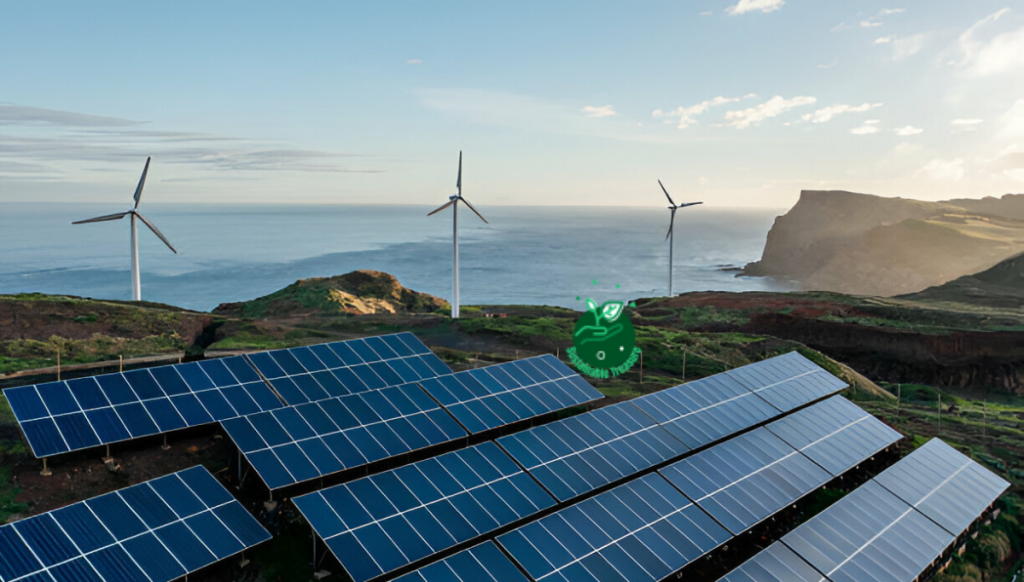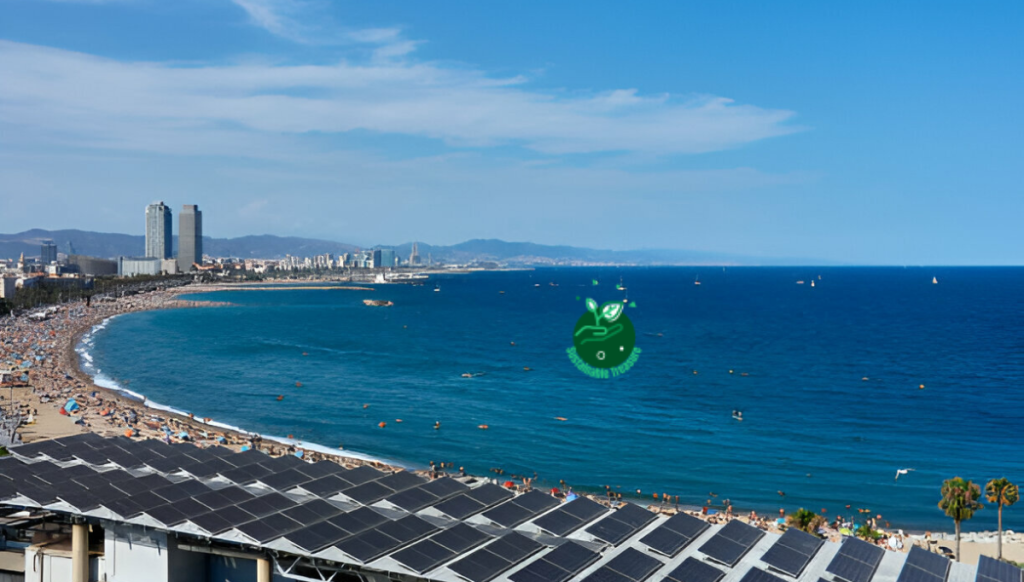Table of Contents
How can we invest in marine conservation and protecting our oceans? The answer lies in innovative approaches that align financial goals with environmental stewardship.
Growing up near the coast, I witnessed firsthand the beauty and fragility of our marine environments.
The vibrant coral reefs that once teemed with life gradually faded, and the once-abundant fish populations dwindled. It was a harsh reality check on the devastating impact of human activities on our oceans.
Fortunately, there are now innovative ways to invest in marine conservation efforts, allowing us to contribute to the preservation of these vital ecosystems while potentially generating financial returns.
In this blog post, we’ll explore five pioneering approaches that can help reshape our relationship with the oceans and secure a sustainable future for generations to come.
5 Innovative Ways to Invest in Marine Conservation

The ocean is a vital part of our planet, covering over 70% of the Earth’s surface and playing a crucial role in regulating our climate, providing food and resources, and supporting a vast array of marine life.
However, the health of our oceans is under threat from various challenges, including overfishing, pollution, climate change, and habitat destruction. Fortunately, there are innovative ways to invest in marine conservation efforts that can help protect and restore these precious ecosystems.
- Sustainable Fisheries and Aquaculture
- Blue Bonds and Green Bonds
- Impact Investing
- Marine Conservation Funds and Grants
- Marine Renewable Energy Investments
Sustainable Fisheries and Aquaculture
One of the most direct ways to invest in marine conservation is by supporting sustainable fisheries and aquaculture practices.
Overfishing has led to the depletion of many fish stocks, putting immense pressure on marine ecosystems. By investing in companies and initiatives that prioritize sustainable fishing methods, such as using selective gear and adhering to catch limits, you can contribute to the long-term health of fish populations and the preservation of marine biodiversity.
Furthermore, sustainable aquaculture, which involves farming fish, shellfish, and aquatic plants in a controlled environment, can help reduce the strain on wild fisheries while providing a reliable source of seafood.
Investing in companies that employ responsible aquaculture practices, such as minimizing waste, limiting the use of antibiotics, and preserving coastal habitats, can promote a more sustainable and environmentally friendly seafood industry.
Blue Bonds and Green Bonds
Blue bonds and green bonds are innovative financial instruments that allow investors to support marine conservation and sustainable ocean management initiatives.
Blue bonds are specifically designed to finance projects that protect and restore marine and coastal ecosystems, such as coral reef restoration, coastal resilience projects, and sustainable fisheries management.
Green bonds, on the other hand, are broader in scope and can be used to fund a range of environmental projects, including those related to marine conservation, such as coastal infrastructure improvements, pollution mitigation, and renewable energy initiatives that benefit ocean health.
By investing in these types of bonds, you can contribute to the funding of critical marine conservation projects while potentially generating a financial return on your investment.
Impact Investing
Impact investing is a growing trend that focuses on generating measurable, positive environmental and social impacts alongside financial returns.
In the context of marine conservation, impact investors can support companies, organizations, and projects that are actively working to protect and restore ocean ecosystems, promote sustainable fishing practices, mitigate marine pollution, and develop innovative solutions for ocean conservation.
Some examples of impact investing opportunities in the marine conservation space include:
- Investing in companies that develop sustainable aquaculture technologies
- Supporting initiatives that promote sustainable tourism in coastal communities
- Funding research and development of technologies for marine pollution mitigation
- Investing in companies that provide sustainable alternatives to plastic packaging and other marine debris sources
By aligning your investment portfolio with your values and prioritizing positive environmental and social impacts, you can contribute to the long-term health and sustainability of our oceans while potentially generating financial returns.
Marine Conservation Funds and Grants
Numerous non-profit organizations and government agencies offer grants and funding opportunities specifically dedicated to marine conservation projects.
By donating to or investing in these funds, you can directly support initiatives aimed at protecting and restoring marine ecosystems, conducting research, and raising awareness about the importance of ocean conservation.
Some examples of marine conservation funds and grants include:
- The National Fish and Wildlife Foundation’s (NFWF) Marine and Coastal Conservation Program
- The Ocean Foundation’s Ocean Conservation Funds
- The World Wildlife Fund’s (WWF) Marine Conservation Program
- The Global Environment Facility’s (GEF) International Waters Focal Area
These funds support a wide range of projects, from establishing marine protected areas and restoring coral reefs to promoting sustainable fishing practices and mitigating the impacts of climate change on coastal communities.
Marine Renewable Energy Investments
Investing in marine renewable energy technologies, such as offshore wind, wave, and tidal energy, can contribute to the transition towards a more sustainable and environmentally friendly energy system while also benefiting marine conservation efforts.
By reducing our reliance on fossil fuels and promoting the use of clean energy sources, marine renewable energy projects can help mitigate the impacts of climate change on ocean ecosystems, such as ocean acidification, sea-level rise, and changes in ocean currents and temperatures.
Additionally, the development of marine renewable energy projects often involves careful consideration of potential impacts on marine life and habitats, leading to improved marine spatial planning and the implementation of measures to protect and conserve marine ecosystems.
Investors can support marine renewable energy projects by investing in companies and funds focused on developing and deploying these technologies, as well as participating in green bonds or other financing mechanisms aimed at funding sustainable energy initiatives.
Top Marine Conservation Funds and Grants
| Fund/Grant | Description |
|---|---|
| NFWF Marine and Coastal Conservation Program | Supports projects that restore and protect marine and coastal habitats, as well as promote sustainable fisheries. |
| The Ocean Foundation’s Ocean Conservation Funds | Provides funding for projects that address ocean pollution, sustainable fisheries, and marine protected areas. |
| WWF Marine Conservation Program | Focuses on protecting marine biodiversity, promoting sustainable fisheries, and addressing threats to ocean health. |
| GEF International Waters Focal Area | Supports projects that address transboundary water management issues, including marine and coastal ecosystems. |
Examples of Impact Investing Opportunities in Marine Conservation
- Investing in companies that develop sustainable aquaculture technologies
- Supporting initiatives that promote sustainable tourism in coastal communities
- Funding research and development of technologies for marine pollution mitigation
- Investing in companies that provide sustainable alternatives to plastic packaging and other marine debris sources
FAQs

Why Should I Invest In Marine Conservation Efforts?
Marine ecosystems play a crucial role in sustaining life on Earth. Oceans regulate our climate, provide food and resources, and support a vast array of biodiversity.
However, these ecosystems are under threat from various challenges, including overfishing, pollution, climate change, and habitat destruction.
By investing in marine conservation, you can contribute to protecting and restoring these vital ecosystems, ensuring their long-term sustainability and the well-being of our planet.
What Are The Potential Financial Returns Of Investing In Marine Conservation?
While the primary goal of marine conservation investments is to generate positive environmental impacts, many of these investment opportunities also offer potential financial returns.
For example, sustainable fisheries and aquaculture practices can lead to long-term economic benefits by ensuring the availability of fish stocks.
Impact investing in companies that develop innovative solutions for ocean conservation can also provide financial returns while contributing to a more sustainable future.
What Are Blue Bonds, And How Do They Contribute To Marine Conservation?
Blue bonds are innovative financial instruments specifically designed to finance projects that protect and restore marine and coastal ecosystems.
These bonds provide funding for initiatives such as coral reef restoration, coastal resilience projects, and sustainable fisheries management.
By investing in blue bonds, you can directly support critical marine conservation efforts while potentially generating a financial return on your investment.
How Can I Invest In Sustainable Fisheries And Aquaculture?
You can invest in sustainable fisheries and aquaculture by supporting companies and initiatives that prioritize sustainable fishing methods, such as using selective gear and adhering to catch limits.
Additionally, investing in companies that employ responsible aquaculture practices, such as minimizing waste, limiting the use of antibiotics, and preserving coastal habitats, can promote a more sustainable and environmentally friendly seafood industry.
What Is Impact Investing, And How Can It Contribute To Marine Conservation?
Impact investing is a growing trend that focuses on generating measurable, positive environmental and social impacts alongside financial returns.
In the context of marine conservation, impact investors can support companies, organizations, and projects that are actively working to protect and restore ocean ecosystems, promote sustainable fishing practices, mitigate marine pollution, and develop innovative solutions for ocean conservation.
What Are Some Examples Of Marine Conservation Funds And Grants?
Several non-profit organizations and government agencies offer grants and funding opportunities specifically dedicated to marine conservation projects.
Examples include the National Fish and Wildlife Foundation’s Marine and Coastal Conservation Program, the Ocean Foundation’s Ocean Conservation Funds, the World Wildlife Fund’s Marine Conservation Program, and the Global Environment Facility’s International Waters Focal Area.
How Do Marine Renewable Energy Investments Contribute To Ocean Conservation?
Investing in marine renewable energy technologies, such as offshore wind, wave, and tidal energy, can contribute to the transition towards a more sustainable and environmentally friendly energy system while also benefiting marine conservation efforts.
By reducing our reliance on fossil fuels and promoting the use of clean energy sources, marine renewable energy projects can help mitigate the impacts of climate change on ocean ecosystems, such as ocean acidification, sea-level rise, and changes in ocean currents and temperatures.
What Are The Potential Risks And Challenges Associated With Investing In Marine Conservation?
While investing in marine conservation can provide environmental and potential financial benefits, there are also risks and challenges to consider.
These may include regulatory hurdles, limited investment opportunities in certain regions, and the long-term time frames required to see measurable impacts.
Additionally, some marine conservation projects may face uncertainties related to climate change impacts or unforeseen ecosystem changes. It’s essential to conduct thorough research and consult with financial advisors before making any investment decisions.
Conclusion
Investing in marine conservation is not only an ethical and environmentally responsible choice but also a potential opportunity for financial returns and positive impact.
By exploring innovative investment options such as sustainable fisheries and aquaculture, blue bonds and green bonds, impact investing, marine conservation funds and grants, and marine renewable energy investments, you can contribute to the protection and restoration of our oceans while aligning your financial goals with your values.
Remember, the health of our oceans is intrinsically linked to the well-being of our planet and all life on Earth. By investing in marine conservation, you are not only safeguarding the future of our oceans but also contributing to a more sustainable and resilient world for generations to come.



